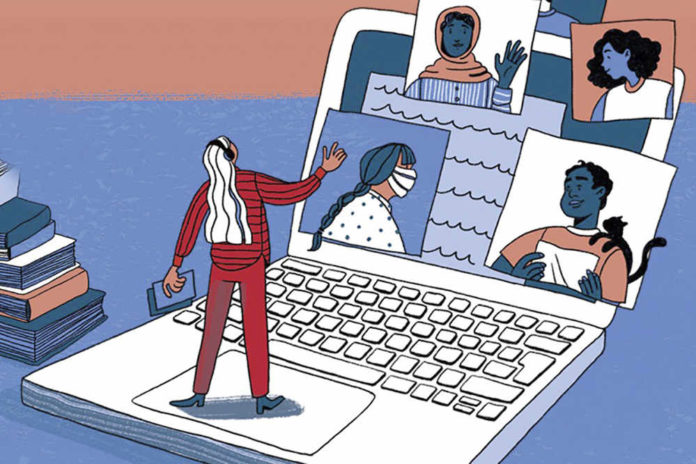October 5 is World Teachers’ Day.
At LEARNTech Asia we’re inspired by the teachers we’ve met. We listened to their stories from the frontlines of learning during the global pandemic.
Through their creativity, innovation, and resilience in using education technology to enhance their pedagogies, they made sure that the learning never stopped.
World Teachers’ Day is celebrated every October 5 to commemorate the anniversary of the adoption of the 1966 ILO/UNESCO Recommendation Concerning the Status of Teachers which sets standards for teachers’ rights and responsibilities.
Held annually since 1994, this year’s theme for World Teachers’ Day is “Teachers: Leading in Crisis, Reimagining the Future” in the context of a global education crisis exacerbated by the COVID-19 pandemic.
Also known as International Teachers Day, October 5, 2020, will draw attention to the voices of teachers, who are at the heart of efforts to meet the global education target of leaving no learner behind, according to UNESCO.
“In this crisis, teachers have shown, as they have done so often, great leadership and innovation in ensuring that #LearningNeverStops, that no learner is left behind,” according to a joint statement from Audrey Azoulay, Director-General of UNESCO, Guy Ryder, Director-General, International Labour Organization, Henrietta H. Fore, Executive Director, UNICEF, and David Edwards, General Secretary, Education International.
“Around the world, they have worked individually and collectively to find solutions and create new learning environments for their students to allow education to continue. Their role advising on school reopening plans and supporting students with the return to school is just as important.”
When the COVID-19 pandemic spread throughout the Asia-Pacific region, health and safety concerns took precedence. Governments in Asia abruptly closed schools. Learning was switched to online modalities.

Taking initiative
In hearing from educators throughout the Asia-Pacific region, LEARNTech Asia discovered that although many teachers were caught unprepared, many stepped up to meet the challenge.
In the Philippines, teachers stepped out of their comfort zones. Veteran teachers who were non-digital natives learned how to use Zoom.
“It’s a matter of us teachers and institutions working together on how we brave this storm,” said Nico Fos, a Filipino teacher at Xavier School in San Juan, Philippines.
While there may have been a lack of guidance from education ministries and schools at the start of the pandemic, Asia-Pacific teachers soldiered on.
“We’re gonna continue teaching. Let’s figure that out,” said Soon Seng Chan, Chief Executive Officer of Teach For Malaysia.
“And so everyone went and figured it out first and then scrambled back together and tried to put some structure into place.”
Going the extra mile
Pre-existing disparities in access to education differentiated the haves from the have-nots. The COVID-19 pandemic exacerbated the situation for learners in Asia without digital devices or the means to get online.
In Indonesia, education disruption was severe in communities without internet connections. In remote provinces, teachers had no choice but to travel long distances to support their students.
“We cannot do online learning because there’s no internet access and people don’t have computers, laptops, or mobile devices,” said Remigus Sua, a teacher from St. Joseph’s Catholic School in Insana district, who goes door to door bringing the classroom to his students.

Maslow before Bloom
In order for learning to take place, students need to feel safe and be cared for. COVID-19 upended families. From the loss of jobs, loss of lives, and parents as essential workers exposing themselves to daily risk — stress and trauma were under the same roof.
“It is like Maslow’s hierarchy of our brain needs. When we think about the fact that our students are not feeling safe, or they don’t feel cared for — what that results in is a lack of learning,” said Archana Iyer, who is based in Bangalore, India as Director for Student Outcomes at Teach For All.
Volunteer teachers working with CampusImpact, a Singapore charity with an after school tuition and counselling center for students in need, continued to support their students remotely through e-learning.
“It’s really down to the human touch. And that’s something no tech can take over,” explained Elysa Chen, Executive Director of CampusImpact.“Tech enables us to maintain or strengthen that human touch.”
Protecting the right to education
COVID-19 has compounded the challenges faced by over-extended education systems globally.
The adoption of the United Nations’ Sustainable Development Goals (SDGs), specifically Goal 4 on Education, ensures inclusive and equitable quality education and promotes lifelong learning opportunities for all. Teachers are key to the achievement of the 2030 Education Agenda.
According to UNESCO, teacher leadership during this pandemic and education crisis has been vital. The contributions teachers have made through their creativity and tenacity have provided remote learning, supported vulnerable populations, and ensured that learning gaps are filled.
Please thank a teacher on World Teachers’ Day.




